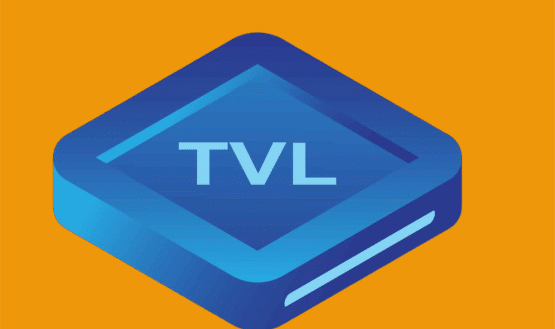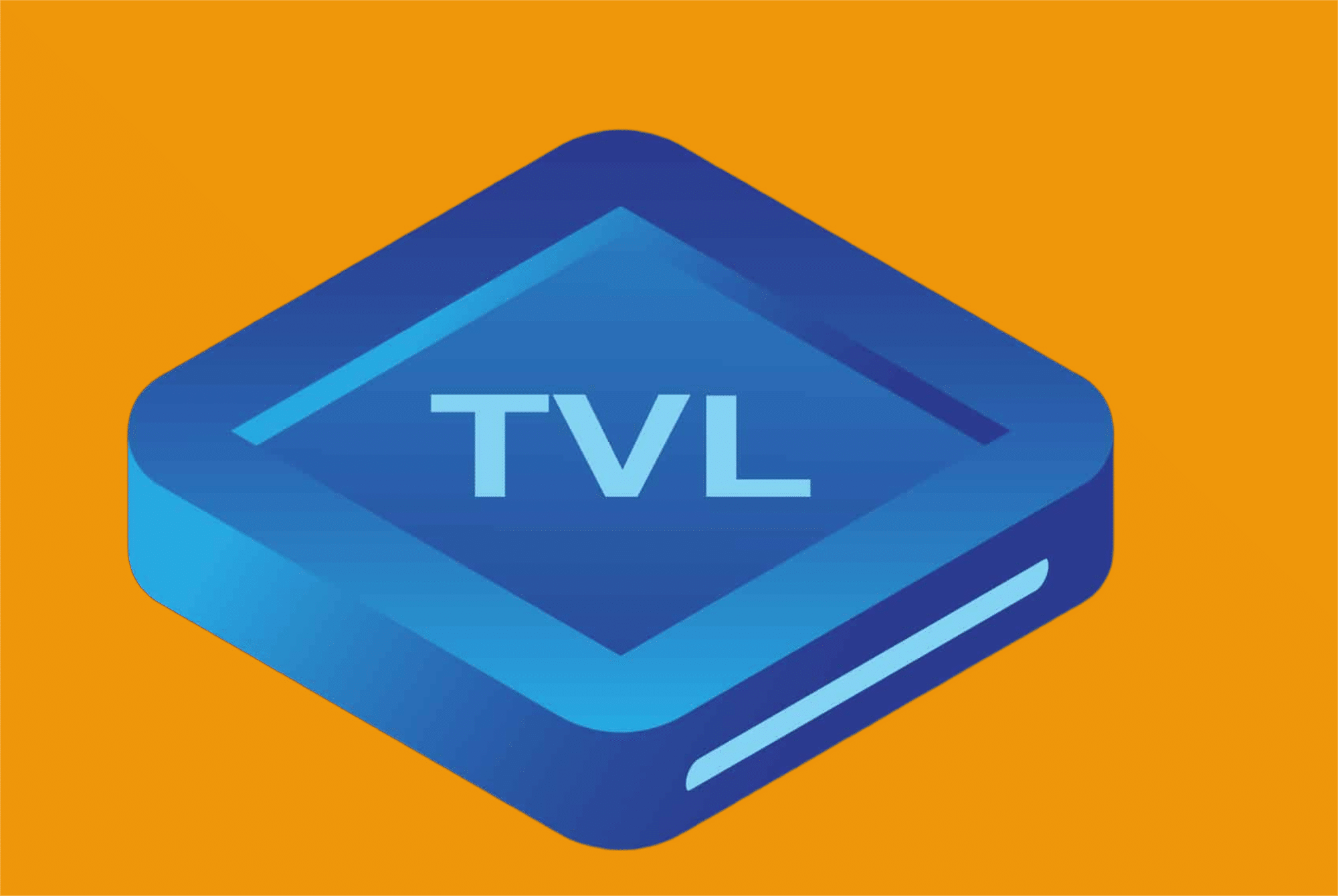Total Value Locked (TVL) is a metric used to determine the total dollar value of digital assets locked, committed, or staked in a blockchain network like Ethereum or a particular DeFi app. Generally, dApps and blockchains with high TVL values are considered more secure and successful than those with lower values.
This article breaks down Total Value Locked (TVL), one of the most important metrics to understand in order to make it in the world of decentralized finance (DeFi).
Key Takeaways
- TVL reflects how much crypto is actively locked in a protocol, showing real user participation and financial activity.
- Higher TVL often signals trust and adoption. Projects with large TVL are typically more established, liquid, and trusted by the community.
- TVL can fluctuate with token prices, staking rewards, and user behavior, so context matters when evaluating it.
What Is Total Value Locked?
When Bitcoin was first released in 2009, the fledgling cryptocurrency community was focused on making it a replacement for fiat currency. With the arrival of Ethereum and its increased blockchain development capabilities, much of the community’s focus shifted to the blossoming utility enabled by smart contracts and decentralized apps or dApps.
These new dApps opened up all different kinds of financial services like borrowing, lending, and yield farming, improving and expanding the services provided by traditional financial institutions. This financial revolution calls for important new metrics that don’t exactly fit with the conventional finance world.
Total Value Locked (TVL) refers to the total dollar amount of digital assets that are currently deposited, staked, or locked within a blockchain network or decentralized application (dApp). It’s commonly used as an indicator of how much capital is flowing into a protocol. In general, higher TVL suggests greater user trust, liquidity, and overall success, while lower TVL may indicate limited adoption or weaker network activity.
The formula used to calculate Total Value Locked looks like this:
All you need to do to calculate TVL is add up the value of all of the assets locked in a given platform or blockchain. Luckily, crypto analytics platforms like DeFiLlama and DappRadar have already done the hard work for you, so you probably will never have to calculate TVL yourself.
Why Is Total Value Locked (TVL) an Important Metric?
Since DeFi platforms operate on public blockchains and usually lack traditional identity verification methods, they rely heavily on collateral to align the interests of borrowers and lenders. Users have to lock valuable crypto assets to take out loans or yield farm.
This fundamental need for locking assets is what makes TVL such an important metric in the DeFi world. Because it measures the total dollar value locked in a given protocol or blockchain, it can serve as a powerful indicator for DeFi users and investors in various ways:
User confidence
A high TVL value typically indicates users trust the platform enough to commit their digital assets to it. When comparing two dApps that offer similar services, the one with higher TVL is generally considered to be more popular and stable. Naturally, TVL is far from a perfect metric, and there are plenty of other important factors to consider when choosing a dApp.
Liquidity barometer
TVL is closely tied to a platform’s liquidity as the locked assets are often used to power services like trading, borrowing, and lending. Platforms with higher TVL typically have greater liquidity, potentially reducing price slippage.
Platform growth
Because TVL measures both user engagement and capital commitment, it can be a useful measure of a platform’s health and growth. A TVL value that consistently goes up over time shows that a platform is attracting more users and locked capital.
The Downsides of TVL Analysis
TVL gives you an important piece of data about a DeFi platform, but it’s far from a complete picture. While the amount of assets staked in a platform is an important metric, that data can be manipulated and it rarely tells the whole story.
Market volatility
TVL is heavily influenced by the price of the locked assets. Crypto market dips can significantly reduce TVL value even if user activity remains steady, while bull markets can cause TVL to soar without any new capital being locked. It’s generally a good idea to check a dApp’s TVL chart, like the one below, and not just its current value, as it can be extremely volatile.

Manipulation
Unethical activities like wash trading (trades that have no real value exchange) can artificially inflate TVL values. Artificially inflated TVLs can also indicate a potential for rug pulls, where a project artificially inflates a token’s value before suddenly selling off, leaving investors with worthless tokens.
Not reflecting user activity
A platform can have a high TVL value but low user activity, which may indicate that the majority of the locked assets are deposited by a small number of users. This could raise concerns of centralization and stability, especially if those users withdraw their funds.
Security
A high TVL indicating a large amount of assets makes a DeFi platform very attractive to bad actors who would try to exploit vulnerabilities in the platform. Even if a high TVL dApp is more secure than most of its competitors, the sheer value it holds puts a bigger target on its back.
Other Important Metrics to Consider
TVL provides a useful but incomplete picture of a platform’s stability and liquidity. It’s important to use TVL in concert with other important metrics to make better-informed decisions. Here are a few useful indicators that can be combined with TVL to provide a more comprehensive view:
Market Cap-TVL Ratio
The market capitalization-to-TVL ratio helps assess whether a dApp’s native token (or governance token) is undervalued or overvalued relative to the platform’s locked assets. It’s calculated by dividing the market cap of a dApp’s token by the platform’s TVL.
If a token has a higher market cap-TVL ratio than its competitors, that may indicate that it is overvalued. However, this could also simply mean that the token itself has a high market value, but the utility provided by the protocol’s smart contracts is relatively low. If a token has a low market cap-TVL ratio, that could indicate that the token is undervalued or that its platform’s smart contracts provide much more utility than the token itself.
This metric can be helpful, but, like TVL, it has major limitations as well. It can be difficult to interpret why it is high or low and you may not be able to glean much useful information from it.
User Activity and Transaction Volume
User activity and transaction volume, when used together, could give you a decent picture of overall engagement within a platform. A high TVL with low user activity may indicate a lack of genuine demand or high centralization and, therefore, a lack of trust in the platform.
Largest DeFi Platforms By TVL
If you’re looking for a new DeFi platform to use and want to take TVL into account when making your decision, check out analytics sites like DeFiLlama and DappRadar. They list the top dApps by TVL on all of the most popular blockchains and provide a ton of other useful info to consider.
At the time of writing, the largest DeFi platforms by TVL are Aave (lending and borrowing), Lido (Ethereum staking), Eigenlayer (restaking), and Sky (savings and rewards).
Total Value Locked – Our Verdict
The decentralized finance world has come a long way in just a few years, providing all kinds of powerful financial services, including lending, borrowing, staking, yield farming, and more. As the DeFi space continues to grow and evolve at an exponential pace, it will likely only become harder and harder to decide which dApp to trust with your money.
Total value locked is an important metric to consider when making an informed decision, but it’s also important to remember that it is far from the only relevant indicator. When TVL is used in concert with fundamental analysis and other indicators, you can gain a more complete picture of any given platform and whether it’s worth using or not.
FAQs
What does TVL mean in crypto?
TVL, or total value locked, is a useful metric that refers to the total dollar value of cryptocurrencies locked in a blockchain network or DeFi app.
What is a good TVL ratio?
TVL is mostly only useful as a relative metric so it all depends on what you are comparing it to. Higher TVLs could indicate more user confidence and activity.
Is TVL a good metric?
TVL can be a decent metric to help determine a platform's liquidity and user confidence, though it is far from perfect and should be used alongside other metrics like user activity for a more complete picture.

